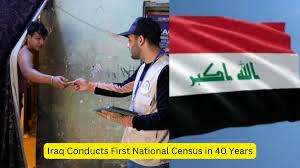G7 Agrees to $50 Billion Loan for Ukraine Using Russian Assets
The Group of Seven (G7) nations have recently agreed on a significant financial move to support Ukraine in its ongoing conflict with Russia. This move involves a $50 billion loan to Ukraine, funded by Russian assets frozen due to sanctions. This decision comes at a critical time, reflecting the international community’s commitment to aiding Ukraine amidst its struggles.
Details of the $50 Billion Loan
The G7, comprising Canada, France, Germany, Italy, Japan, the United Kingdom, and the United States, has decided to provide Ukraine with a $50 billion loan. This loan is to be financed through Russian assets that have been frozen as a result of the sanctions imposed on Russia following its invasion of Ukraine. The decision underscores the G7’s unified stance against Russian aggression and its support for Ukraine’s sovereignty and territorial integrity.
Utilization of Frozen Russian Assets
The assets that will be used to fund this loan have been frozen as part of the extensive sanctions regime against Russia. These sanctions were introduced to weaken Russia’s economic capacity to sustain its military operations in Ukraine. By redirecting these assets to support Ukraine, the G7 aims to both aid Ukraine’s resistance and undermine Russia’s financial stability.
Impact on Ukraine’s Economy and Defense
This financial support is crucial for Ukraine as it struggles to maintain its economy and defense capabilities. The $50 billion will likely be used to support various sectors, including military expenses, infrastructure rebuilding, and humanitarian aid. This substantial financial injection will help stabilize Ukraine’s economy and bolster its defense efforts against Russian forces.
International Response and Implications
The international community has largely supported the G7’s decision, viewing it as a strong statement against aggression and a commitment to upholding international law. This move may set a precedent for future actions against aggressor states, demonstrating the potential use of frozen assets to support victims of conflicts. It also highlights the effectiveness of international cooperation in addressing global crises.

Why this News is Important
Significance for International Law and Order
This decision by the G7 underscores the importance of upholding international law and order. By utilizing frozen assets from a state engaged in unlawful aggression, the G7 sends a clear message that such actions will have tangible consequences. This is crucial for maintaining global stability and deterring future acts of aggression.
Financial Support to Ukraine’s Resistance
The $50 billion loan is a lifeline for Ukraine, which is grappling with immense economic and military challenges due to the ongoing conflict. This financial support will significantly enhance Ukraine’s ability to defend itself, maintain public services, and support its population during these difficult times. For students preparing for government exams, understanding the dynamics of international financial aid is essential.
Precedent for Future Sanctions and Asset Use
The use of frozen assets to fund loans for countries affected by aggression sets a new precedent. This innovative approach may influence future international strategies for dealing with similar situations. It illustrates how economic measures can be used effectively to support peace and security.
Historical Context
Background of the Ukraine-Russia Conflict
The conflict between Ukraine and Russia has deep historical roots, but it escalated significantly in 2014 with Russia’s annexation of Crimea. The situation further deteriorated in 2022 when Russia launched a full-scale invasion of Ukraine, leading to widespread destruction and a humanitarian crisis. International sanctions were imposed on Russia to cripple its economic capabilities and pressure it to cease hostilities.
Previous International Responses
Since the invasion, the international community, including the European Union, the United States, and other allied nations, has imposed severe economic sanctions on Russia. These sanctions targeted various sectors, including finance, energy, and technology, and resulted in the freezing of significant Russian assets abroad.
Evolution of Sanctions and Aid Strategies
Over the years, the strategies to counter aggression have evolved, with economic sanctions becoming a critical tool. The G7’s decision to use frozen assets to support Ukraine marks a significant development in these strategies, combining punitive measures with direct financial support to victims.
Key Takeaways from the G7 $50 Billion Loan for Ukraine
| Serial Number | Key Takeaway |
|---|---|
| 1 | The G7 has agreed to provide a $50 billion loan to Ukraine, funded by frozen Russian assets. |
| 2 | This move reflects the G7’s unified stance against Russian aggression and support for Ukraine. |
| 3 | The loan will aid Ukraine’s economy and defense efforts amidst the ongoing conflict. |
| 4 | Utilizing frozen assets for financial aid sets a new precedent in international conflict responses. |
| 5 | This decision highlights the importance of international cooperation in addressing global crises. |
Important FAQs for Students from this News
1. What is the G7?
The G7, or Group of Seven, is an international intergovernmental economic organization consisting of the seven largest IMF-advanced economies: Canada, France, Germany, Italy, Japan, the United Kingdom, and the United States.
2. Why did the G7 agree to a $50 billion loan for Ukraine?
The G7 agreed to the loan to support Ukraine amidst its ongoing conflict with Russia. This move is intended to help stabilize Ukraine’s economy and bolster its defense capabilities.
3. How will the $50 billion loan be funded?
The loan will be funded using assets that have been frozen as part of the sanctions imposed on Russia following its invasion of Ukraine.
4. What are frozen assets?
Frozen assets are financial assets that have been restricted or immobilized by legal or governmental measures. In this context, the assets are those owned by Russia and its entities, which have been frozen due to international sanctions.
5. What is the significance of using frozen Russian assets for the loan?
Using frozen Russian assets for the loan sets a new precedent in international conflict response strategies, showing how economic measures can be effectively used to support countries affected by aggression.
Some Important Current Affairs Links














